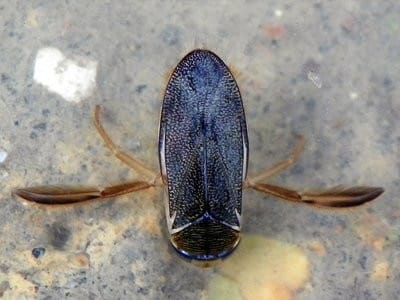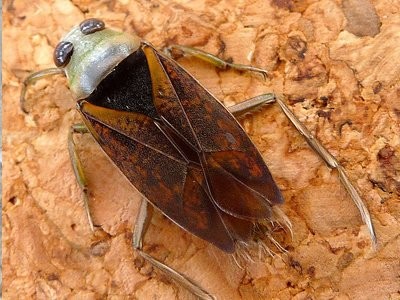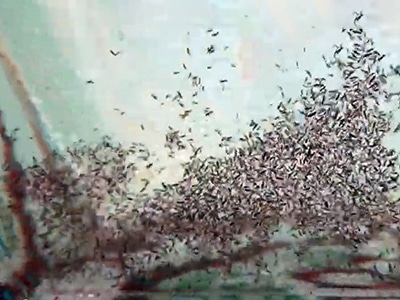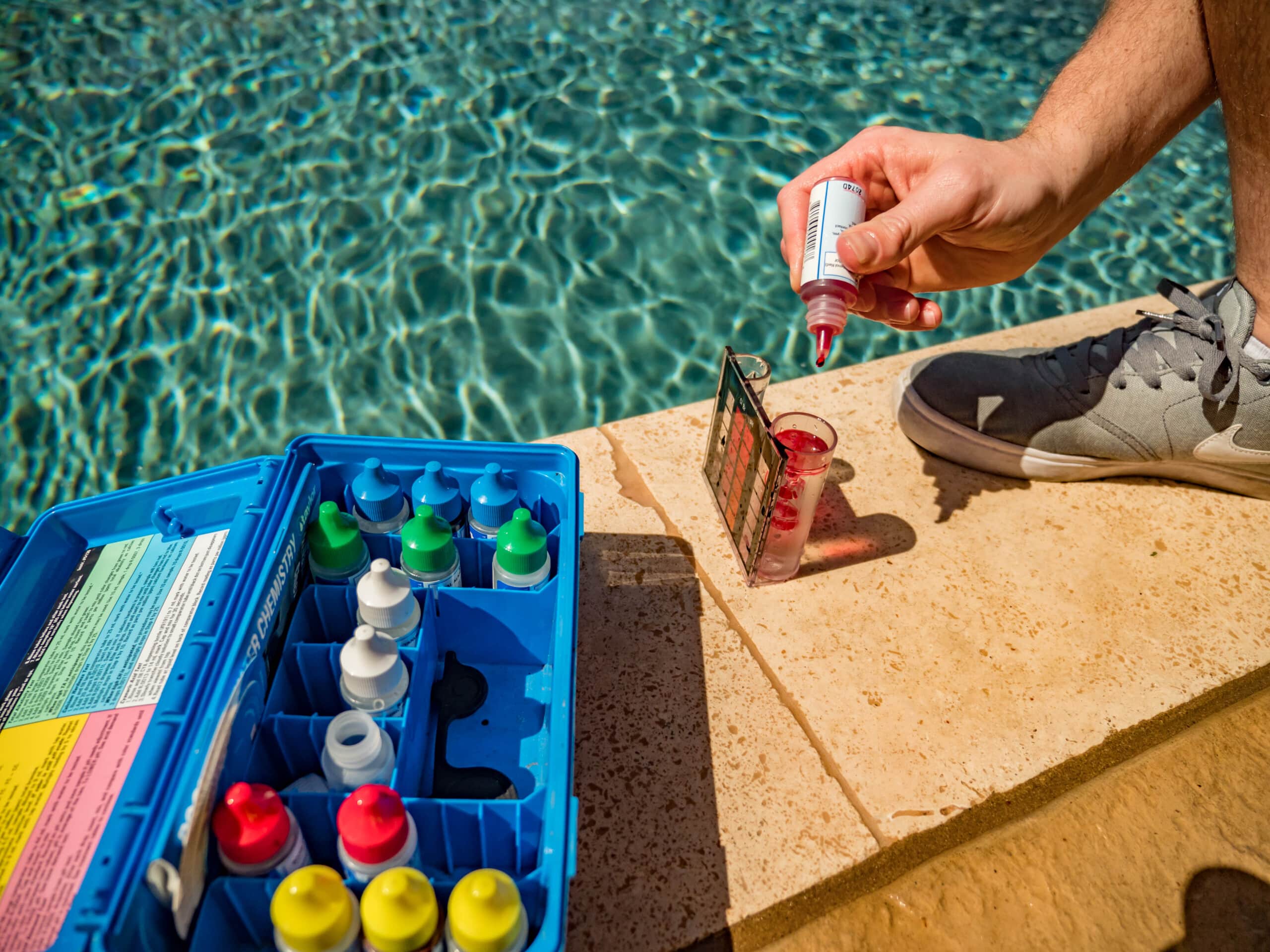Spending time outdoors can be rejuvenating, but often, time spent outside can mean you have to contend with annoying insects.
Your swimming pool is not immune to visits from outdoor creatures, including swimming pool bugs. The presence of swimming pool bugs will definitely make your pool less appealing and can turn your plan of a fun afternoon into a battle between you and these unpleasant party crashers.
Let’s take a look at common swimming pool water bugs, why they’re so keen on living in your pool, and how to remove them.
The Water Boatman

Water Boatman Pool Bug
One of the most common swimming pool bugs is the water boatman. Water boatmen are oval-shaped bugs that do not bite,
Water boatmen are named for their boat-shaped bodies and oar-like legs. Water boatmen are typically less than 1/2 inch in length and swim in rapid, plucky movements.
Water boatmen tend to appear on the water’s surface, but they can breathe underwater via air bubbles.
While water boatmen don’t pose much of a threat and won’t chew on you, they can be problematic for pool owners because they attract backswimmers.
The Backswimmer

Pool Bugs- The Backswimmer
A cousin to the Water Boatman is the Backswimmer. You can identify a backswimmer by recognizing that they do, indeed, swim on their backs.
Another big difference between the two, however, is that Backswimmer swimming pool bugs can bite!
The backswimmer uses its long oar-like legs for propulsion and has an oval-shaped head and an elongated body, generally less than 15 mm (0.6 inches) in length.
But don’t let their size fool you. Backswimmers are predators with a nasty disposition. Their favorite snack is their own relative, the Water Boatman,
Where water boatmen go, backswimmers tend to follow. Not only do backswimmers, feed on water boatmen, but they also look a lot like water boatmen.
The Springtail

Springtail Pool Bugs
At about 1/16 of an inch in size, springtails are tiny, yet bothersome swimming pool bugs. Their most distinguishing feature is their tail-like appendage, or furcula, which folds beneath their abdomen. If threatened, a springtail will release its furcula and spring into the air (hence the name).
Unlike water boatmen and backswimmers, springtails aren’t interested in making a habitat out of your pool. Most of the time springtails fall in by accident.
Even though they aren’t a threat to humans, springtails can be a nuisance for pool owners. Individual springtails can form masses and clump together, covering a pool’s surface.
If you have springtails coating the surface of your pool, you’re definitely not going to want to get in the water.
Evicting Pool Bugs

After you’ve removed the food source, an algaecide, used as directed, will inhibit algae growth. Utilizing swimming pool covers and spraying invading insects with a soapy water mixture to kill them are additional steps that you can take to keep pool bugs away.
Lighting can also attract insects. Attract fewer bugs by using as few lights as possible, loaded with the lowest wattage bulbs that provide adequate light.
The most important thing, however, is to keep your water balanced with proper pH and chlorine levels. A quality pool water test kit used constantly, is essential.
If you’re struggling with swimming pool bugs, or you are challenged with keeping a consistent pool maintenance schedule, connect with a local Premier Pool Service provider. We offer free estimates on your pool care needs, and we can provide weekly pool service, to help keep your pool pristine.



